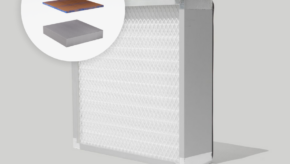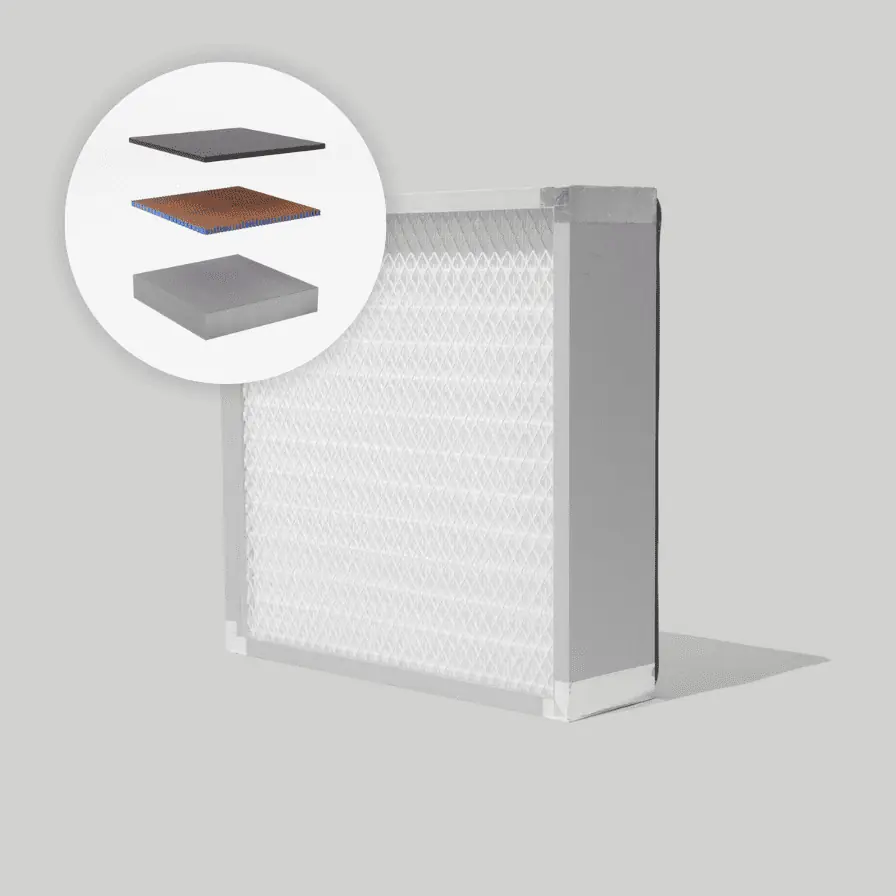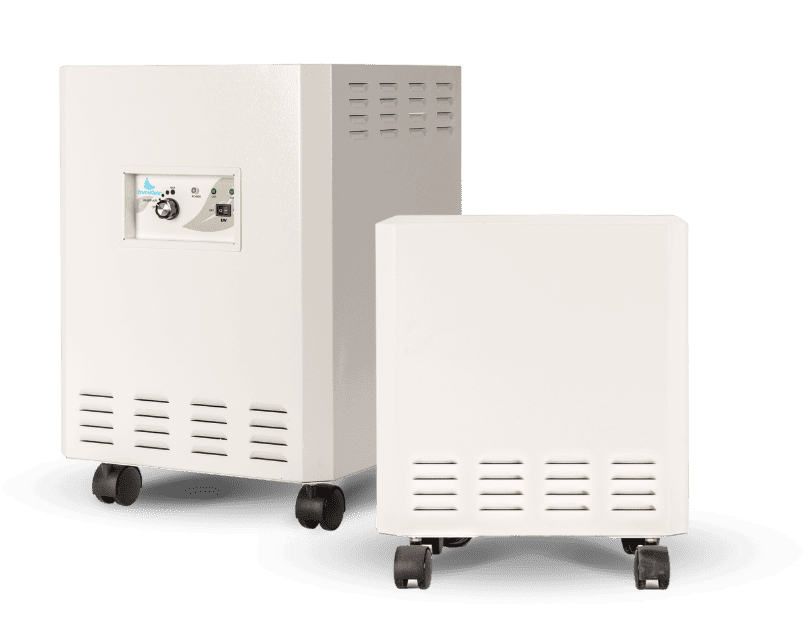The world of indoor toxins is a scary one that many people find themselves unprotected from, particularly in your home where there are many potential threats residing in and looming within this personal indoor environment. Indoor toxins have gained a watchful eye from numerous health organizations including the Environmental Protection Agency (EPA) that has performed a number of tests and studies that have cooperated the link to toxins present in indoor environments and different health risks occupants inside the home face from these airborne toxins. According to the EPA, they concluded that levels of indoor air pollutants were often 2 to 5 times higher than that of outdoor levels, which is not only daunting to homeowners but to manufacturers who have sourced potential indoor toxins within the home.
Formaldehyde (HCHO) is a common indoor toxin that can be found present in the indoor air of a home through the introduction of furniture, flooring, wood, and building materials that are used to construct the home. This chemical VOC is a harmful carcinogen that is identified as a harmful substance to human health – and when present inside of an indoor environment in large quantities this VOC has the potential to significantly alter the indoor air quality levels to alarming heights.
In this article, we are going to discuss the dangers of formaldehyde in the air, the different sources of formaldehyde in a home, and the best way to thoroughly remove formaldehyde in a home through the use of an effective air purifier.
What is Formaldehyde
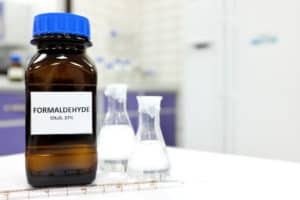
The chemical Formaldehyde is a strong irritant and potent sensitizer that is both colorless and flammable gas at room temperature. Formaldehyde is quickly broken down in the air within hours and will dissolve easily over time. This toxin is commonly used in a variety of applications such as an industrial disinfectant, a preservative in funeral homes and medical labs, and can even be found as a preservative in foods, antiseptics, medicines, and cosmetics (shampoos, soaps, lotions, sunscreens, and even cleaning products).
Indoor air contains higher levels of formaldehyde than outdoor air, this can be due to a number of reasons such as more sources present in this environment and lack of ventilation and airflow. Typically, the levels of formaldehyde measured in indoor air range from 0.02-4 parts per million (ppm), compared to outdoor formaldehyde levels that range from 0.0002 to 0.006 ppm in rural areas and 0.001 to 0.02 ppm in urban areas.
What Does Formaldehyde Smell Like
Are you familiar with that distinctive odor of new car smell that emanates throughout the car for weeks, sometimes months, after the date of purchase? New car smell is an often-debated smell that either people absolutely love or it’s an odor that can be dreaded and lead to potential health issues like allergy symptoms and sensitivities in those who are averse to the chemical structure of this ‘new’ odor. You may be wondering how new car smell relates to that of formaldehyde smell, but ultimately the smells are very comparable. New car smell and formaldehyde smell are nearly composed of the same types of chemicals, VOCs that produce the same overwhelming odor into the air.
Formaldehyde smell is a repulsive, irritating odor that will immediately hit you upon inhalation or ingestion of this chemical VOC in the air. The smell will quickly spread into the air upon the entrance of formaldehyde from new furniture, new flooring, or even new building materials used inside of this indoor environment.
Formaldehyde Sources in Home
The list of potential sources in a home can be extensive and will greatly contribute to the possible high levels of formaldehyde within the airspace of this environment. Formaldehyde is known to be used within the following items found in a home; paints, coatings, plastic products, pesticides, cosmetics, leather goods, adhesives, glues, resins, synthetic fabrics, permanent press bedding, clothing, and even drapes found in the home.

These sources of formaldehyde can be identified by six different household categories including the following:
Household products: Household items that are commonly used in a home can sometimes contain high or trace levels of formaldehyde within its composition that can taint the airspace when applied within the environment. Air fresheners, plug-in air fragrances, and cleaning products can all contain potential levels of formaldehyde in their composition that will build up within the airspace and lead to potential health issues to those exposed to this hazardous VOC.- Combustion sources: A plethora of combustion sources that are found in the home such as furnaces, water heaters, stoves, fireplaces, and even smoking from cigarettes and e-cigarettes can potentially emit formaldehyde into the indoor environment.
- Clothing & Bedding: A surprising source of formaldehyde that can be found in a home is from the clothing that we wear, along with the bedding that we sleep with every night. New clothing is sometimes treated with formaldehyde during the manufacturing process as a preservative to the fabric, and this chemical can cling to the fabric for quite some time on the material even after washing. Bed linens and sheets can also contain formaldehyde within the material, especially polyester, cotton blend, or permanent-press bedsheets.
- Upholstery: Many upholstered furniture will contain chemical flame retardants and other chemicals that will become released into the air through off-gassing that will taint the indoor air quality. Formaldehyde is among a VOC that will be used in the adhesives of this piece of furniture and begin to become emitted into the air.
- Body Care products: The very products that you use every day on your body including skincare, nail polish, toothpaste, and perfume are all items that can contain and emit formaldehyde into the environment and lead to human exposure upon application within a controlled indoor environment.
- Furniture and Wood: New furniture is a household item that will produce the highest level of formaldehyde into the air and leave the environment highly toxic to humans. The adhesives and glues that are used to manufacturer these pieces of furniture are usually the culprits behind this formaldehyde emission.
Formaldehyde in Carpet

When selecting a new type of flooring to lay throughout the inside of your home, often one of the most desirable choices for homeowners is the cheap and comfortable carpeting that comes in a variety of colors, styles, and materials. Although there are many advantages to carpeting, there are some potential risks that are present deep within the composition and installation of the carpeting within the indoor environment of your home.
Formaldehyde in carpet is commonly used in the adhesives and glues used during the installation process of the carpeting on the floors, and as the flooring acclimates into the indoor environment the chemical will turn into a gas and begin being released into the air through the off-gassing process. The strength of the formaldehyde emissions in the home are the highest during the first 24 to 48 hours after installation but can progress for days and even weeks after the installation.
Formaldehyde in Furniture
As we discussed before, new furniture that is placed inside of a home is one of the highest sources of formaldehyde that can be found within this indoor environment. The wood, adhesives, and glues that are used in the manufacturing of these household items are the main components of the furniture that can contain formaldehyde within its composition.
Similar to carpeting, the formaldehyde found in new furniture will also go through the off-gassing process, releasing the chemical VOC into the air when it turns into a gas in room temperature conditions. This can lead to an increased level of toxins in the air, which will result in certain health risks to the home’s occupants. Therefore, when purchasing new furniture for your home it is important to look for nontoxic furniture that contains little to no VOCs in its configuration.
Formaldehyde in Wood
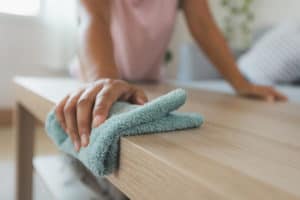
Wood is a known source of VOCs that will emit these chemical compounds into the air upon the introduction of the wood into a home. Plywood, particleboard, and other pressed woods are known for containing this hazardous chemical and can release a substantial level of formaldehyde into the environment that will become airborne through off-gassing.
Wood can be used in cabinets, furniture, flooring, and even in building materials, which can all be found in excess throughout the home. This will in turn increase the level of formaldehyde and contaminate the indoor air significantly.
Formaldehyde Dangers: Allergy & Symptoms
Formaldehyde is a potent irritant that can significantly affect and stir health issues upon exposure to most individuals. As this chemical turns into a gas in an indoor environment it can create an amalgam of symptoms including a burning sensation of the eyes, nose, and throat, along with other respiratory issues that are altered from the formaldehyde exposure. An allergy to formaldehyde will typically occur through skin contact, especially products that contain formaldehyde that are placed on the human skin or through clothing that contains this toxic chemical from manufacturing processes.
The primary route of exposure to formaldehyde is through breathing in the formaldehyde in the air. Upon exposure to formaldehyde, humans will begin to experience significantly altered health and symptoms that will be triggered by this VOC.
Symptoms from Formaldehyde Exposure
When formaldehyde is released into the air, particularly at high levels over 0.1 ppm, this VOC emission will trigger a bout of health issues. The health reactions and symptoms that an individual will experience when exposed to formaldehyde in the air can vary depending on the person, their health standing, and how old they are will impact their overall reaction to formaldehyde.
The health symptoms that are commonly experienced from formaldehyde exposure will include the following:
- Watery eyes
- Burning of the eyes, nose, and throat
- Coughing
- Wheezing
- Nausea
- Skin irritation
How to Remove Formaldehyde in Air
Formaldehyde is released into the air through the off-gassing process of new furniture, carpeting, wood, flooring, and other sources within the home that can harbor the hazardous formaldehyde chemical in its composition. The off-gassing level of formaldehyde can depend on various factors inside of the home such as heat and humidity. The formaldehyde, as we discussed earlier, will turn into a gas when introduced into room temperature environments and this will trigger the off-gassing of the chemical into the air – this process can last for an undetermined length of time, sometimes weeks or even months.
Formaldehyde, unfortunately, is constantly present within the airspace of the home – whether in low or high levels in the air. Determining the different levels of formaldehyde in this environment can be accomplished through the use of specifically designed air quality meters that can detect this level in the air.
HCHO Levels Meter
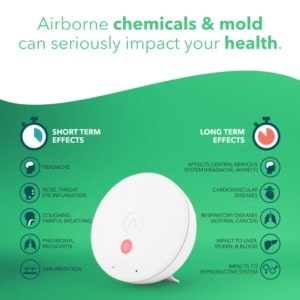
Tracking the levels of indoor toxins and contaminants in your home is something that is not commonly done in many households, but it should be. The more and more that we are introducing hazardous contaminants into the indoor air, the more vigilant you should be in tracking these levels with the help of a smart air quality meter. The Airthings Wave Mini is an indoor air quality monitor that works in a home to track the air around you – measuring TVOCs( total volatile organic compounds), temperature, and humidity. The Airthings smartphone app and dashboard let you track details for each pollutant in the air for a given space over time, helping you understand how to improve your indoor air quality.
The air quality sensing on the Airthings Wave Mini measures VOCs like formaldehyde or HCHO levels.
Formaldehyde Air Purifier
The removal of formaldehyde inside of a home or other indoor environment can require extensive work, along with an effective air purifier that will continually work in the environment to combat formaldehyde and other airborne contaminants. Air purifiers are designed to filter the indoor air of pollutants that are traveling in the airspace, trapping the contaminants within a filter media that will help improve the indoor air quality in the environment. The technologies that are used today within air purifiers can vary depending on the air purifier brand – with some using carbon, ozone, or even ionization. These core air purifier technologies that are most commonly seen today on the market all contain different pros and cons, but when it comes to VOC removal most of these will simply fall short.
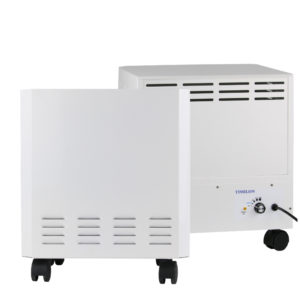
The EnviroKlenz Air Purifier is your solution that improves your personal indoor environment air quality by removing chemical odors, fragrances, VOCs, particulates, and allergens all at once. EnviroKlenz utilizes a patented earth mineral technology that works through an “adsorptive neutralization” process for chemical, odors, fragrances, and VOCs neutralization and/or elimination. Without the use of masking agents or the release of chemical byproducts, the EnviroKlenz technology is contained within an air cartridge filter (The EnviroKlenz Air Cartridge) that works as the first stage filtration inside the air purifier for noxious odor, fragrance, and VOC removal – including formaldehyde. The second stage filtration housed in the EnviroKlenz Air Purifier is a hospital-grade HEPA filter that works to trap and remove fine particulate matter that is larger than 0.3 microns in size – including allergens and other particulate matter.
In a comparative test against formaldehyde, the IQAir® was able to reduce the compound the fastest from the chamber due to having a much higher loading of media. The MoleKule® did not have much impact on the formaldehyde in this test. The BlueAir® HEPA media and bare carbon filter did show some physical absorption of formaldehyde, but physical absorption is very prone to releasing whatever it may have absorbed over time since there is no chemical interaction. The EnviroKlenz® Air System does actively react with the formaldehyde through adsorption and polymerization on the oxide surface of the EnviroKlenz® media.

